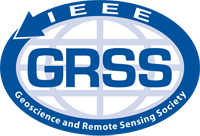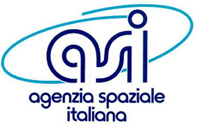FD-04: Remote Sensing with Reflected Global Navigation Satellite System (GNSS-R) Signals
James L Garrison, Adriano Camps, and Estel Cardellach
Sunday, July 26
08:30 - 17:30
Abstract:
"Although originally designed for navigation, signals from the Global navigation satellite system (GNSS), ie., GPS, GLONASS, Galileo and COMPASS, reflect off of the Earth and ocean surface, where the effects of rough surface scattering change their properties. Several methods have been developed for inverting these effects to retrieve geophysical data, including ocean surface roughness (winds) and soil moisture. GNSS reflectometry (GNSS-R) methods enable the use of a small, passive, instruments, that can be deployed with significant cost savings, as compared to radiometers or scatterometers, on small satellites, light aircraft, and UAV’s.
Extensive sets of airborne GNSS-R measurements have been collected over the past 15 years, during multiple experimental campaigns, including penetration of hurricanes with winds up to 60 m/s and flights over agricultural fields with calibrated soil moisture measurements. Fixed, tower-based, GNSS-R experiments have been conducted to make measurements of sea state, sea level, ice and snow, soil moisture, as well as inter-comparisons with microwave radiometry. Early research sets of satellite-based GNSS-R data were collected by the UK-DMC satellite, launched in 2003. Tech Demo Sat-1, launched in July 2014 will carry the SGR-ReSI instrument to demonstrate GNSS-R remote sensing from orbit. The CYGNSS Earth System Science mission, an 8-satellite constellation funded by NASA for launch in 2016 will also carry the SGR-ReSI to observe tropical storm development with high spatial and temporal resolution. ESA has concluded a Phase A study of the Passive Reflectometry and Interferometry System In-Orbit Demonstration (PARIS-IOD) project. GEROS-ISS, the GNSS ReEflectometry, Radio-Occultation and Scatterometry experiment aboard the International Space Station, is another ESA experiment to demonstrate the altimetric performances of GNSS-R (with secondary goals on scatterometry, land applications, and experimental radio-occultations) presently in Phase-A studies, with a launch planned for 2019. ³Cat-2 is a micro satellite built with 6 cubesat units (30 cm x 20 cm), developed at the Universitat Politècnica de Catalunya Barcelona Tech (UPC), Spain, using the PYCARO GNSS-R receiver, which will test semi-codeless techniques in reflected data, as well as dual-polarimetric GNSS-R reflectometry. The launch of this satellite is funded by a European Commission project (E-GEM) and is expected to take place by 2015.
With the launch of these satellite missions, the availability of spaceborne GNSS-R data, and the development of new applications from these measurements, is expected to increase significantly.
This all-day tutorial will summarize the current state of the art in physical modeling, signal processing and application of GNSS-R measurements from fixed, airborne and satellite-based platforms.
- An outline of the tutorial follows:
- Introduction to the GNSS signal structure: Correlation properties of PRN codes; BPSK and BOC modulation;
- Models for the reflected GNSS (GNSS-R) signal: Geometric optics-based models for rough surface scattering, their limitations, and current attempts to improve upon them. Geometry of the bistatic radar problem. Second-order moments of the reflected signal waveform as a stochastic process.
- Geophysical model functions: Ocean height spectrum models (Elfouhaily), and the generation of filtered mean square slope. Models for the slope statistics (e.g. Cox and Munk) and reduction of these models to account for the L-band wavelength of GNSS-R signals. Surface reflection coefficients on land and water, and the relationship to soil moisture and ocean salinity.
- Retrieval of geophysical data through inversion of scattering models. Direct inversion of scattering models, to estimate surface roughness from delay-Doppler waveform measurements. Non-linear least squares approaches and their sensitivity. Recent results on full-PDF retrievals. Faster computational methods, including series approximations, waveform peak tracking, and matched filters.
- Power calibration of the reflected signal.
Biography:
James L Garrison has been a member of the faculty at Purdue University since 2000, where he is currently an Associate Professor in the School of Aeronautics and Astronautics. He has held courtesy appointments in the School of Electrical and Computer Engineering and the Division Environmental and Ecological Engineering. From 1988 to 2000 he was employed by the National Aeronautics and Space Administration (NASA), first at the Langley Research Center in Hampton VA, and later at the Goddard Space Flight Center in Greenbelt MD. He earned a PhD from the University of Colorado Boulder in 1997 and also holds a BS from the Rensselaer Polytechnic Institute and an MS from Stanford University. He is the author or co-author of 26 journal articles, 52 conference proceedings, 6 US Patents, and has served as the Chair of GNSS+R 2012, an IEEE-NASA co-sponsored conference. Prof. Garrison has received a number of awards, including a NASA Exceptional Space Act Award, a NASA New Investigator grant, an Institute of Navigation Early Achievement Award, and a Keck Futures Initiative grant. He is a co-chair of the GNSS and Signals of Opportunity Working group of the Instrumentation and Future Technologies Technical Committee, along with Dr. Cardellach. Current research interests of Prof. Garrison include Earth remote sensing using Global Navigation Satellite Systems (GNSS) and signals of opportunity.
Adriano Camps was born in Barcelona, Spain, in 1969. He received the degree in Telecommunications Engineering and Ph.D. degree in Telecommunications Engineering from the Universitat Politècnica de Catalunya (UPC), Barcelona, Spain, in 1992 and 1996, respectively. In 1991 to 1992, he was at the ENS des Télécommunications de Bretagne, France, with an Erasmus Fellowship. Since 1993, he has been with the Electromagnetics and Photonics Engineering Group, Department of Signal Theory and Communications, UPC, where he was first Assistant Professor, Associate Professor in 1997, and Full Professor since 2007. In 1999, he was on sabbatical leave at the Microwave Remote Sensing Laboratory, of the University of Massachusetts, Amherst. Since 1993, he has been deeply involved in the European Space Agency SMOS Earth Explorer Mission, from the instrument and algorithmic points of view, performing field experiments, and since 2001 studying the use of GNSS-R techniques to perform the sea state correction needed to retrieve salinity from L-band radiometric observations. His research interests are focused in microwave remote sensing, with special emphasis in microwave radiometry by aperture synthesis techniques and remote sensing using signals of opportunity (GNSS-R). He has published about 130 papers in peer-reviewed journals, and more than 250 international conference presentations, holds 7 patents, and has advised 17 Ph. D. Thesis students (+ 8 on-going), and more than 100 final project and Ms.C. Theses. His publications have received more than 3500 citations, his h-index is 30. He is the co-lead of the Remote Sensing Lab and the UPC NanoSat Lab. He is responsible of the first two UPC nano-satellites 3Cat-1, a 1U CubeSat with 7 small technology demonstrators and scientific payloads, and 3Cat-2, a 6U CubeSat with the first dual-frequency dual-polarization GNSS-R payload. Both nano-satellites are scheduled for launch in 2015.
Estel Cardellach received a PhD degree from the Universitat Politècnica de Catalunya (UPC), Barcelona, Spain, in 2002. She has been working on scientific applications of the Global Navigation Satellite Systems (GNSS) for remote sensing of the Earth, such as extraction of geophysical information of the GNSS reflected signals, radio-occultation, and geodetic techniques. She was a National Research Council Awardee for a postdoctoral position at NASA/Jet Propulsion Laboratory, Pasadena, CA (2002-2003); a postdoctoral researcher at Harvard Smithsonian Center for Astrophysics, Cambridge, MA (2003-2005). Since 2005 she is at the Institute of Space Sciences (ICE-CSIC/IEEC), Barcelona, Spain, currently under the Spanish 'Ramón y Cajal' program. She is the local manager of EUMETSAT's Radio-Occultation Meteorology Satellite Application Facility (ROM-SAF). She is Principal Investigator (PI) of the space-borne experiment 'Radio-Occultation and Heavy Precipitation' aboard the PAZ Low Earth Orbiter (ROHP-PAZ); member of the 'GNSS Reflectometry, Radio Occultation and Scatterometry experiment aboard the International Space Station' (GEROS-ISS) Proposing Team and co-chair of its Scientific Advisory Group (SAG), both mission and SAG funded by the European Space Agency (ESA). She is a co-chair of the GNSS and Signals of Opportunity Working group of the Instrumentation and Future Technologies Technical Committee, along with Prof. Garrison.




